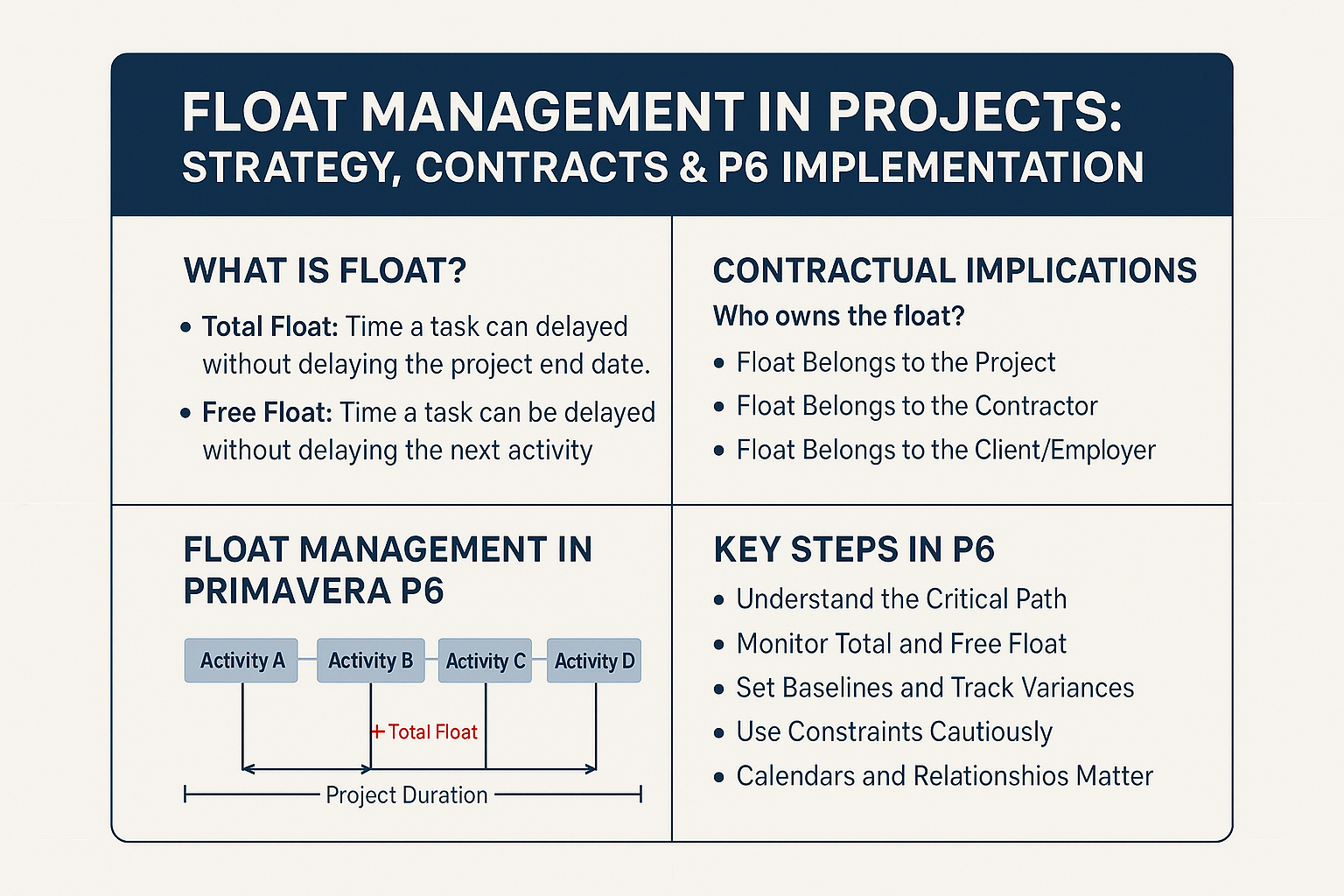🚦 What Is Float and Why Does It Matter?
There are typically two types of float:
- Total Float: Time a task can be delayed without delaying the project end date.
- Free Float: Time a task can be delayed without delaying the next activity.
Float is especially important in complex, multi-contractor projects where several schedules converge. It’s a shared resource—when not managed properly, disputes can arise over who “owns” the float.
📜 Contractual Implications: Who Owns the Float?
Contractual float ownership is a key risk management concern in construction and engineering projects. The three main approaches found in contracts are:
- Float Belongs to the Project (most common default): Anyone can use it, but first come, first served.
- Float Belongs to the Contractor: Only the contractor who created the float can use it.
- Float Belongs to the Client/Employer: Client reserves float to absorb their own delays.
Standard contract clauses may not always define float ownership explicitly. For example:
- The FIDIC Red Book doesn’t directly address float, leaving room for interpretation.
- NEC contracts often favor collaboration but still leave float management up to mutual agreement and clarity in the Works Information or Contract Data.
- Under AIA and EJCDC (commonly used in the U.S.), it’s generally assumed float is a shared resource unless stated otherwise.
Best Practice: Define float management and ownership clearly in the contract or project controls plan to avoid claims or disputes.
🧰 Float Management in Primavera P6
Primavera P6, a leading tool for schedule planning and control, provides powerful capabilities for tracking and managing float.
Key steps to manage float in P6:
- Understand the Critical Path: Use the Critical Path Method (CPM) to identify activities with zero float.
- Monitor Total and Free Float: Use columns or filters in P6 to display float values.
- Set Baselines and Track Variances: This helps in identifying float erosion as the project progresses.
- Use Constraints Cautiously: Hard constraints (like “Must Finish On”) can artificially reduce or eliminate float.
- Calendars and Relationships Matter: Inaccurate calendars or overly tight logic can distort float calculations.
Pro Tip: Use the “Longest Path” feature rather than just relying on total float = 0 to identify true critical activities in complex schedules.
⚖️ Strategic Considerations for Project Teams
- Communicate Early: Establish float policies early with all stakeholders.
- Monitor Changes: Track how schedule revisions or change orders affect float.
- Document Usage: Record decisions involving float allocation to avoid future disputes.
- Collaborate: Use float to the benefit of the entire project, especially in fast-track or design-build environments.
📌 Conclusion
Float is not just a scheduling technicality—it’s a valuable buffer that protects project timelines. But it must be understood, controlled, and contractually defined. Tools like Primavera P6 can help manage float effectively, but they must be complemented by clear contract clauses and open communication.
By integrating contractual awareness with technical precision, teams can leverage float to deliver projects more predictably—and profitably.
💬 Have experiences or questions about float management in your projects? Let’s connect and discuss best practices.


